How to organize paint supplies
Let’s learn how to organize your used and new paint so you’ll know in an instant that you need, where to find it, and how to store it. So, why would you want to know this? Let’s see if this scenario sounds familiar…
You decide to touch up some scratches on your wall. Easy enough, right? You head on over to the garage for the leftover paint, but what you find is a room full of random paint cans. You have no idea which one you need. Some are not labeled, some are rusted shut, and some are dried out.
And you don’t even know the name of the color your looking for because you never wrote it down in the first place. That would be so bad if you didn’t have 12 cans of different colored gray paint!
Then once you spend way more time then you intended just looking for the paint, you search for a paint brush. The search continues until you finally stumble upon a paint brush, but it’s hard as a rock! UGH!
Well, enough of that nonsense! All you wanted to do is fix some scratches! Let’s fix this problem!
This post may contain affiliate links. If you choose to purchase a recommended product, I may receive a small commission at no additional cost to you. Rest assured that I will not recommend any product that I would not use myself. For our full policies and disclosures click here.
How to purge your unused paint and paint solvents
Okay, the first step to organize your paint supplies is to purge what you don’t need. I always say, “You can’t organize clutter!” So every good organizing project will start with purging unused or unusable items.
Want to learn all about decluttering? Read my post “How to declutter” for lots of tips and tricks.
Go thru your items one by one and purge anything that is no longer usable such as dried up paints, empty containers, and unusable brushes, as well as any other items that are no longer useful to anyone. (See disposal tips below.) We’ve got to see what’s left so we can know how to organize it.
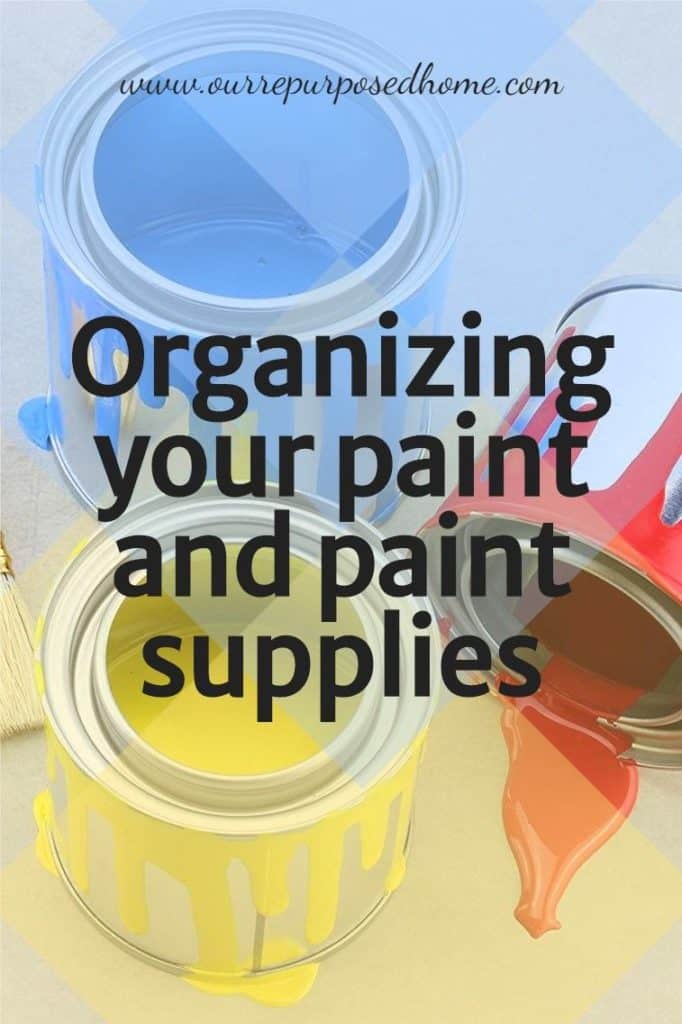
How to dispose of unusable paint and solvents
There are a few things you need to be aware of when you are organizing your paint and paint solvents. You must practice safe disposal.
- You cannot throw latex paint out with your regular trash unless it is fully dried. Take off the lid and let it dry in the sun, add kitty litter, or purchase a hardener (krud kutter) at the paint store. Once fully dry you can toss it in the trash.
- Oil based paints are considered hazardous and you should not dispose of in the trash. Check with your local hazardous waste facility for instructions for disposing oil based paint.
- To dispose of spray paint cans, first empty leftover paint by spraying onto some type of scrap material such as cardboard or fabric. When dry throw scrap and can in the trash. Some places allow you to recycle the can. Check your local area for instructions.
- Paint thinner, turpentine, mineral spirts, and other solvents must be disposed of at a hazardous waste facility. Make sure all left over solvents are sealed tightly in their containers. Never pour these solvents down your drain! You can dispose of empty containers in your trash if they are completely dry. Dry out rags and seal in metal cans before disposing them at the facility.
Next, you can sort thru items that you no longer want, but may be useful to someone else. If you’d rather not contribute to landfills or hazardous waste dumps then here is a list of places you could donate your usable paints and supplies.
Where to bring paint you no longer need
- Some paint stores or box stores, like Lowe’s or Home Depot, will accept left over paint.
- Habitat for humanity Restore takes leftover paint and supplies.
- Ask your local thrift store if they take donations of paint or paint supplies.
- Check with your local schools. They may be able to use it for art projects or in the theater department.
- Ask scout leaders if they could use some supplies.
- Put a listing on yard sale sites like Facebook Marketplace or craigslist and see if someone could use it.
- Ask friends and family. You never know if someone could use it for a craft project or furniture redo.
How to organize paint supplies
Now that you only have items left that are useful to you, lets organize them in a way that you will easily be able to find them, know exactly what they are, and even make the storage look great too.
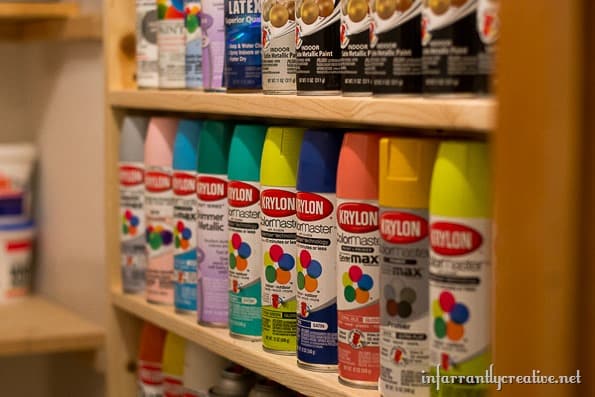
Keeping track of paint color information
There are many ways that you can keep records of your home’s paint colors. Here are a few of my favorites.
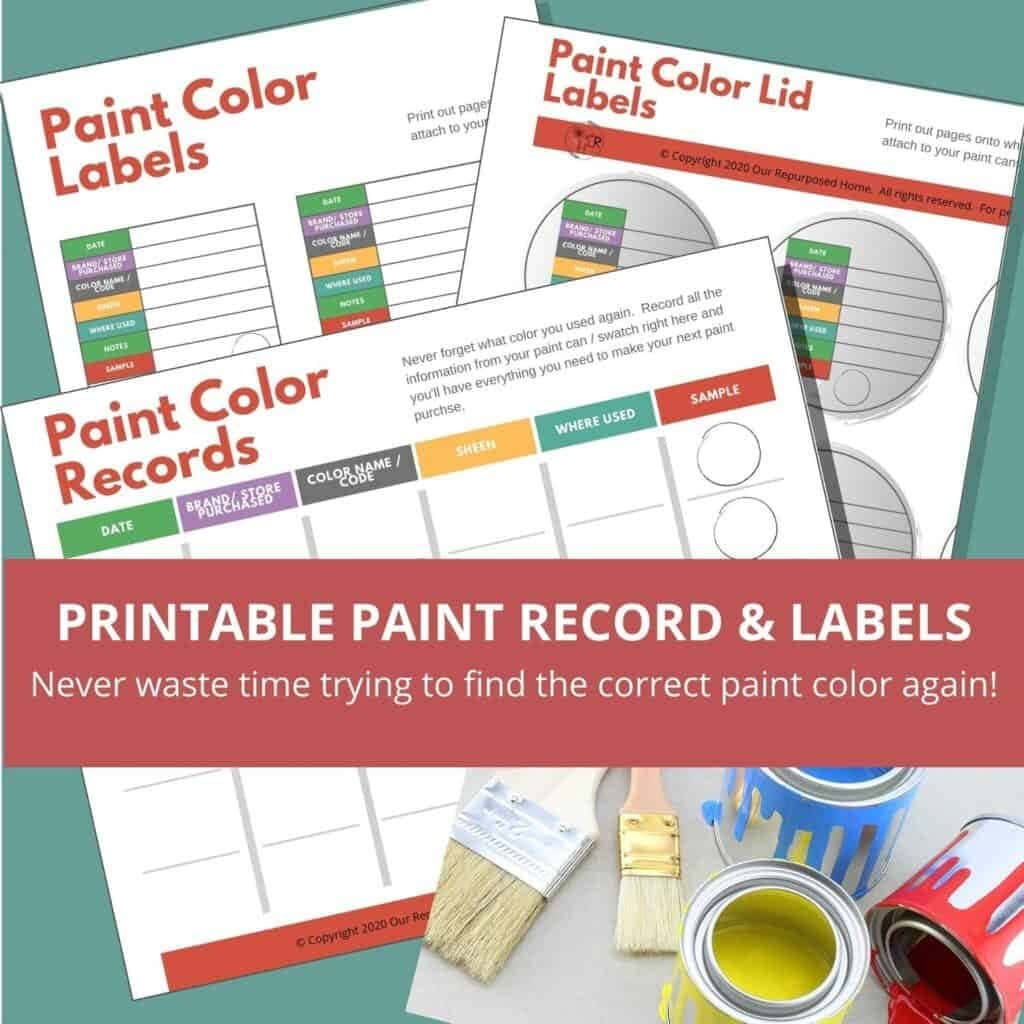
- Use a paint color chart. Simply write down all of the paints information such as color name, codes, brand, sheen, and where you used it into a chart. I made my own paint color records sheet and you can download it by clicking the link above.
- Use paint labels on your cans. Try and keep the label on the can clean so you can read it and write where you used the paint right on the can. Or you can use these labels I made for cans and for can lids.
- Collect paint sample chips and write where you used it on the back, hole punch them and attach them with a ring clip. Hang the samples from a nail near your paint.
- Use paint stirrer sticks to save color info by dipping them into the paint and letting them dry. Simply write the paints information on the back of the stick with a sharpie. You can also drill a hole in the bottom of the stick and clip together with a ring clip or display them in a mason jar.
- Write the paint information on a piece of masking tape and stick it on the back side of your switch or outlet cover in the room you used it. It may help to put a small smudge of the color on it as well.
All of these ideas will help organize your home’s paint information so well you will never waste time trying to find the right paint again.

What containers are good to organize paint supplies?
- Most paint companies will recommend that you store your left over paint in the original container. But this isn’t practical when you are trying to save space and get organized. But if you want to use the original paint can, then put a piece of plastic wrap over the top of the can before you put the lid back on. This will help keep paint from drying the lid shut. And always use labels so you know what’s in the can.
- Did you know that you can buy new paint cans? They come in different sizes too so you can store your left over paint in a smaller can and take up less space in your storage.
- Purchase paint tubes, touch up cups, or touch up pens for leftover paint.
- Why not use mason or other clear jars to store your paint? You will be able to see the color right away and it will look nice.
- If you have craft paints to store then try putting small bottles in clear plastic bins, in a tiered tray, in totes, lazy Susan, or on a wall shelf.
- For paint tubes used for artwork you could clip the bottom of the tube with a binder clip and hang from a peg board or nail.

You might like this…
Want more great ideas for your craft paint storage? Read that post!
Use recycled products to store paint supplies
- Baby food or spaghetti jars make great containers for small amounts of paint.
- Cardboard trays that come with a case of pet food or other cans will organize smaller containers of paint.
- Soup cans make great containers for small brushes or paint sticks
Storage ideas for other paint supplies
- Store small amounts of solvents in glass jars and label well!
- Hang paint rollers on the wall so they are within reach.
- Hang a roll of paper towels and painter’s tape on a peg board.
- Store spray paint on it’s side with the colored cap facing out in a cubby. Or line up on a wall shelf.
- Stir sticks can be placed in a jar or can.
- Store brushes in a jar with handles down, in clear plastic bins, or hang on the wall or pegboard.
- Paint cups, or artist paint trays can be stored in clear plastic bins.
- Paint trays should be stored on a shelf either flat or on its end in between slats.
- Tarps should be dried and folded on a shelf.
Once you organize your paints and paint supplies, doing a quick touch up will once again be… quick and easy like it should be.

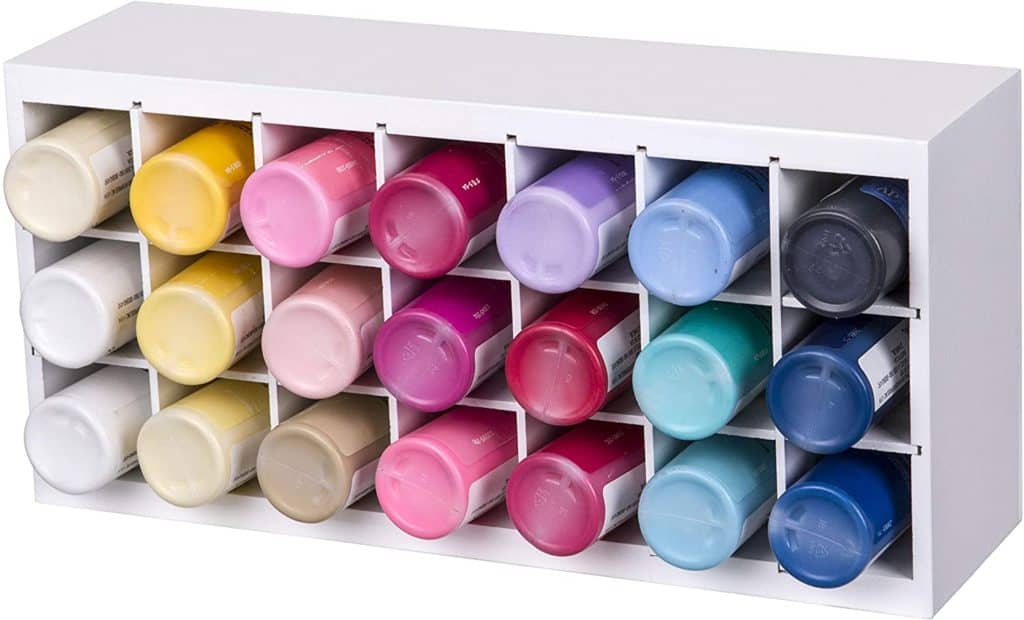

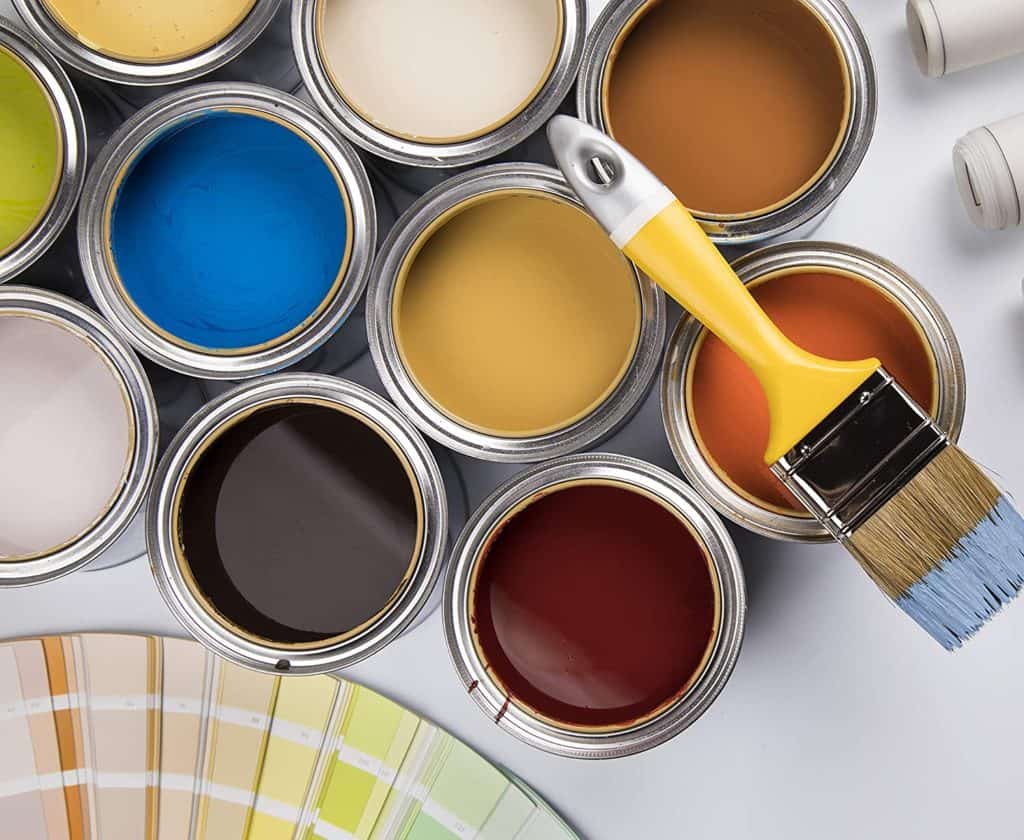




Finally someone who answered my paint organization questions!!
Glad it helped